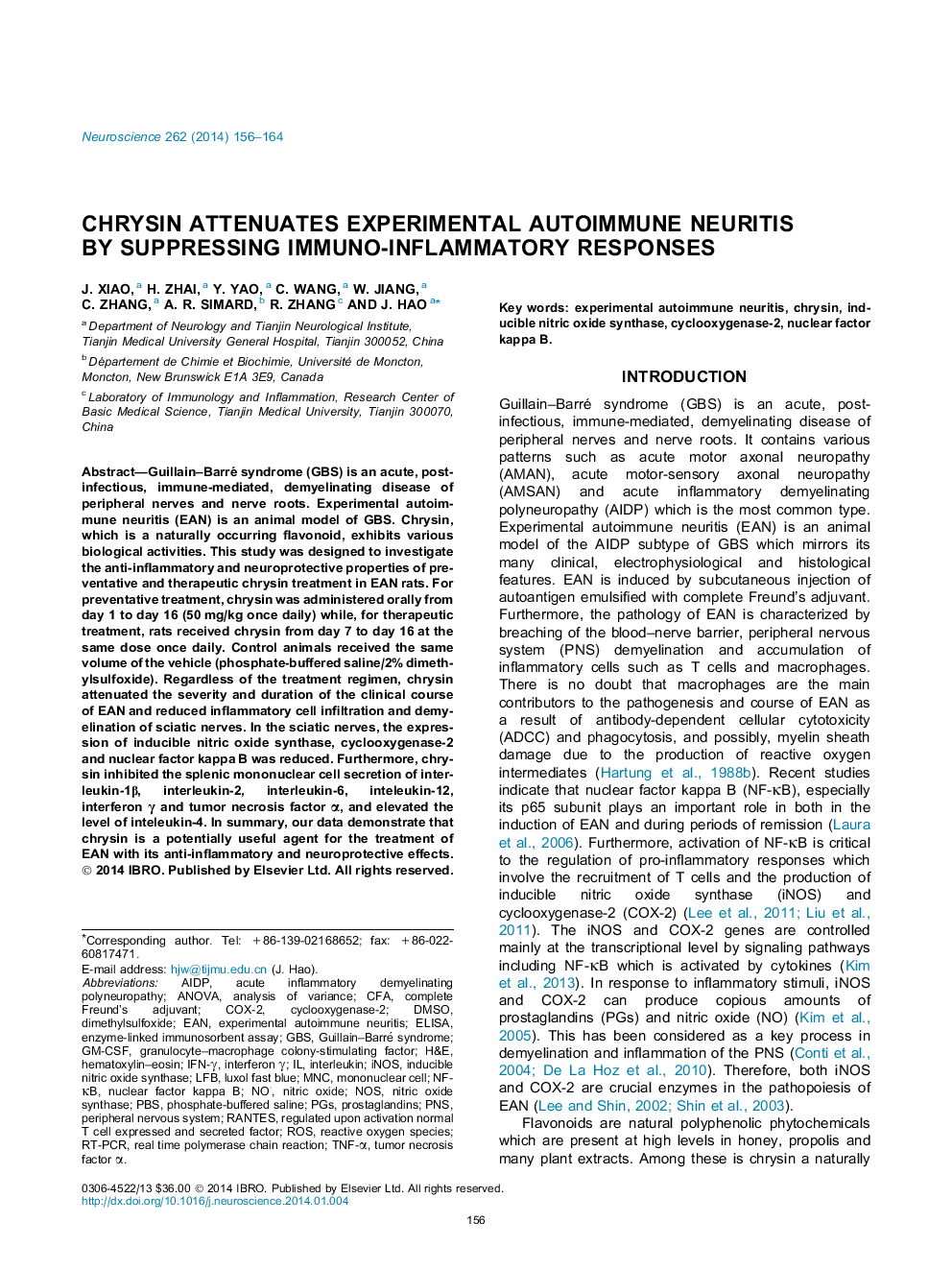| Article ID | Journal | Published Year | Pages | File Type |
|---|---|---|---|---|
| 6274070 | Neuroscience | 2014 | 9 Pages |
â¢We propose chrysin is a potent anti-inflammatory and neuroprotective agent for EAN.â¢Chrysin reduced inflammatory cell infiltration and demyelination of sciatic nerves.â¢Chrysin inhibited the expression of iNOS and COX-2 via suppressing NF-κB pathway.â¢Chrysin depressed levels of pro-inflammatory cytokines.
Guillain-Barré syndrome (GBS) is an acute, post-infectious, immune-mediated, demyelinating disease of peripheral nerves and nerve roots. Experimental autoimmune neuritis (EAN) is an animal model of GBS. Chrysin, which is a naturally occurring flavonoid, exhibits various biological activities. This study was designed to investigate the anti-inflammatory and neuroprotective properties of preventative and therapeutic chrysin treatment in EAN rats. For preventative treatment, chrysin was administered orally from day 1 to day 16 (50 mg/kg once daily) while, for therapeutic treatment, rats received chrysin from day 7 to day 16 at the same dose once daily. Control animals received the same volume of the vehicle (phosphate-buffered saline/2% dimethylsulfoxide). Regardless of the treatment regimen, chrysin attenuated the severity and duration of the clinical course of EAN and reduced inflammatory cell infiltration and demyelination of sciatic nerves. In the sciatic nerves, the expression of inducible nitric oxide synthase, cyclooxygenase-2 and nuclear factor kappa B was reduced. Furthermore, chrysin inhibited the splenic mononuclear cell secretion of interleukin-1β, interleukin-2, interleukin-6, inteleukin-12, interferon γ and tumor necrosis factor α, and elevated the level of inteleukin-4. In summary, our data demonstrate that chrysin is a potentially useful agent for the treatment of EAN with its anti-inflammatory and neuroprotective effects.
Graphical abstractDownload high-res image (77KB)Download full-size image
